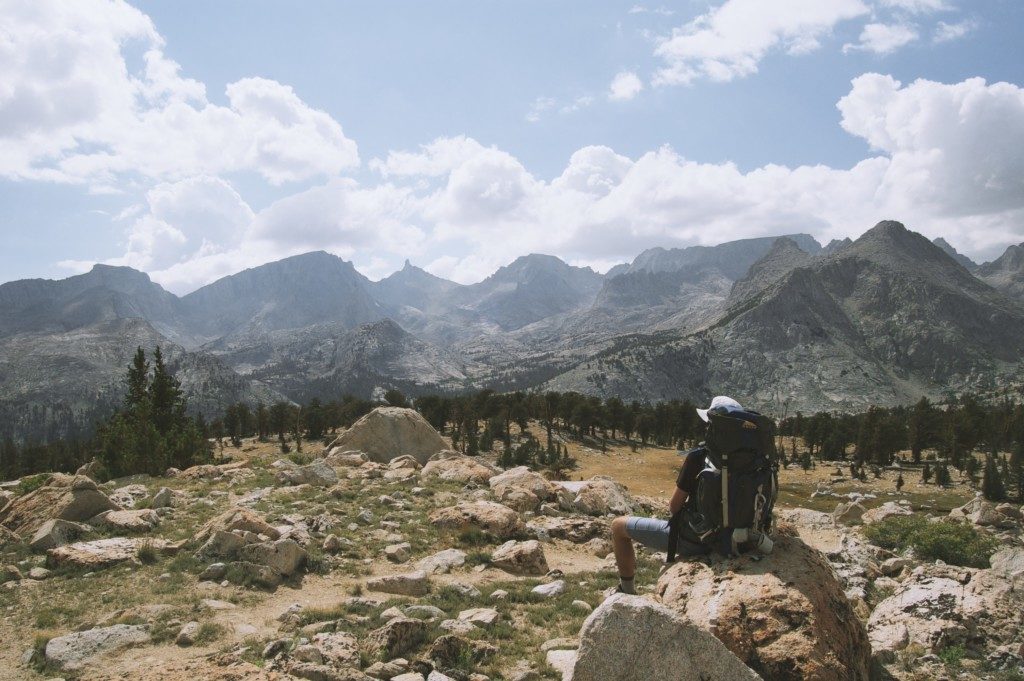[This article originally appeared in Backpacker Magazine]

Image courtesy of Unsplash and Andrew Collins
Having trouble rounding up your gear and scooting out the door? Here are 10 simple tips guaranteed to get you organized, banish packing headaches, and maximize trail time.
1: Pick your spot.
Don’t lose time running from closet to closet, looking for items so scattered you end up forgetting what you were looking for. Instead, keep all of your stuff – tents, boots, ranger – in one designated spot. “With all your gear in one place, you’ll feel less hesitation about the task of rounding stuff up,” says Vicki Norris, a professional organizer in Portland, OR. A spare room, the backyard shed, even a garage wall work fine; just avoid hard-to-access places like attics, which make retrieval an even bigger chore.
2: Choose your locale.
We love exploring new parks. But the learning curve – directions, permits, trail maps – can be easy to overlook. If you’re not going to an old standby, carve 30 minutes from your Monday lunch break to find a trail (backpacker.com/hikes has nearly 10,000 from all over North America). Then call the park to check on conditions and permits, and print driving and trail maps. Another way to pick a destination that saves time is to take advantage of shelters – like the numerous lean-tos along the Appalachian Trail – to reduce the hassle and pack space of tent, fly, and stakes. If it’s summer, skip the sleeping bag and flop on a pad.
3: Clear out the deadwood.
“When you organize your gear, prune it at the same time,” Norris suggests – which is organizer jargon for ditching obsolete items. “If you catch yourself putting six sleeping bags away, stop and evaluate which ones ought to go.” That way you avoid wasting storage space, and you nix the clutter that hides items you actually need. Owning a single coolest makes deciding which one to pack a no-brainer.
4: Keep ’em separated.
Hiking, skiing, and mountaineering boots look tidy lined up on a shelf. But storing unrelated gear together slows the packing process, says Aryeh Copa, a professional skier and photographer in Steamboat Springs, CO. Since capturing a postcard-quality shot requires dashing out when the light is right – not 2 hours later – Copa speeds up gear-gathering by storing her camera, ski stuff, and hiking gear in distinct clusters, so she can find what she needs quickly. Adventure racer Ian Adamson, who preps for as many as six sports in one outing, segregates items in labeled plastic bins. “Just grab the backpacking bin, drop it in the car, and pack at the trailhead,” he says.
5: Subdivide and conquer.
Now that you have your backpacking-specific gear bin, don’t just keep piles of loose stuff in it. Norris recommends using small mesh bags to create kits that keep items together in the pack – a toilet kit (trowel, TP, hand sanitizer), cook kit (pots, stove, lighter, sponge), and first-aid kit, for example. “It eliminates that dread of having to remember to pack every little gizmo all over again,” Norris says. Replenish the kits after each trip, so they’re ready to go next time.
6: Stock up.
Simplify food prep by making extra dinner portions during the week and freezing them in zip-top bags. Come Friday, you’ll have ready-to-go lasagna helpings that will thaw for dinner on Saturday. Not that desperate? Stick with lighter, nonperishable foods – and still save time – by buying in bulk. Adamson and ultralight hiker Andy Skurka avoid grocery delays by socking away instant soups, pastas, dried fruit, and nuts. Back home, transfer foods to zip-top bags and divide into meal-sized portions. Ditto for sunscreen: Buy small travel bottles and fill them from a family-size container. You’ll have lots of packable SPF 30, and you won’t generate trash by tossing travel-size disposables.
7: Multiply the essentials.
True, efficient packing is about streamlining. But there are some things you just can’t have too many of, like tubes of lip balm, snack bars, socks, hand warmers, and water-proof matches. “Invest in extras, so you can store a complete set of essentials in each pack you use,” Copa recommends. “Buying duplicates might cost you $30, but it speeds things up a lot.” Or just store one complete set of extras in a designated stuff sack you can have ready to shove in your pack. Never again will you hold up the show searching for your one compass.
8: Nix the gear fuss.
Ope for low-maintenance models of stoves and boots, and you can reduce tedious prep work. Exchange the white-gas stove for butane canisters so you can skip the cleaning, repairing, and fuel-bottle refills. Wear waterproof/breathable fabric boots to eliminate time spend treating leather uppers. Choose chemical water purification tabs or drops instead of a complicated, weighty, and costly filtration system. And stick to one-pot meals in nonstick cookware to reduce prep, packing, and cleaning time – on and off the trail.
9: Make a clean sweep.
We’ve all rolled home Sunday night with a carload of dirty gear, too tired (or lazy) to clean, dry, and restock it. But neglecting the job does more than just invite mildew; the snowballing disorganization makes it harder to escape next weekend. “You have to schedule download time,” says Norris. Keep Monday night free to replenish the first-aid kit, air out the tent, and do laundry. Keep a cleaning and repair kit – rags, Seam Grip, an awl and other tools, and tube of a stain remover such as OxiClean – with your gear.
10: Be ready for whatever.
You’ve heard it before: Checklists help everybody, even those ultra-type-A’s who never let a sock go unmatched. Yet no single checklist can cover every kind of outing. If you’ve been up north for a year, it’s easy to forget how wildly temperatures can fluctuate in Arizona in March. That’s why Skurka, who’s done springtime treks in the desert, summer climbs in Colorado’s Indian Peaks, and winter hikes in Minnesota, uses gear lists from previous adventures to help him pack for upcoming ones.
-By Kelly Bastone
![]()
See the PDF here: Backpacker – Perfect Packing Guide 6/2007


